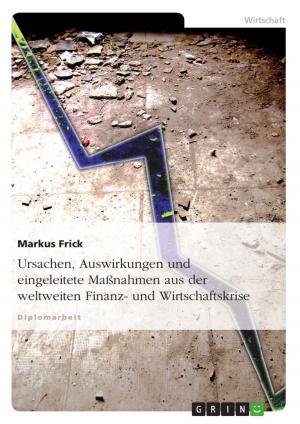'Neue Mitte' in the middle of nowhere - Structural Change for the better?
Structural Change for the better?
Nonfiction, Social & Cultural Studies, Political Science| Author: | Hannah Cosse | ISBN: | 9783638583435 |
| Publisher: | GRIN Publishing | Publication: | December 29, 2006 |
| Imprint: | GRIN Publishing | Language: | English |
| Author: | Hannah Cosse |
| ISBN: | 9783638583435 |
| Publisher: | GRIN Publishing |
| Publication: | December 29, 2006 |
| Imprint: | GRIN Publishing |
| Language: | English |
Seminar paper from the year 2005 in the subject Politics - International Politics - Topic: European Union, grade: 1,0, University of Twente (Faculty of Business, Public Adminstration and Technology), course: Public Administration - European Economic Governance, 10 entries in the bibliography, language: English, abstract: Economy is determined by dynamic processes. Structural change in the Ruhr Area is symptomatic for Europe's manufacturing regions. Grown on the base of heavy industry during industrialisation, a consumption and productivity crisis influenced the whole economy of the region. High unemployment rates and the closing down of factories and mines recoined the image of the area. Today structural change led the region towards high-tech, culture and leisure facilities. Structural change has consequences on workers, inhabitants and the region's economy as a whole. Impacts can be either negative or positive. Planners must keep these consequences in mind while planning a new project for structural change. Oberhausen's structural change was really successful. The 'Neue Mitte' created 10000 new jobs, Oberhausen became a growth pole for consumption and leisure facilities. Nevertheless new problems arose. Purchasing power that was attracted by the CentrO has had negative impacts on cities in vicinity and also on the city centre of Oberhausen itself, which results in a Zero-Sum-Game. The regional structural change framework shows that supply and demand factors are the starting points of a regions economic performance. This performance is influenced as well by institutional factors as by the grade of diversity of the economy. In the Ruhr Area and in Oberhausen local governments first acted too late to absorb the decline of the industry (constraints), then they set up projects to emphasize the change (incentives). The 'Neue Mitte' shows that structural change needs diversity, otherwise a new dependent mono-structure develops, which is again vulnerable and likely to break down. Responsibility, diversity and balance are the features of successful structural change. Of course, economy is not all about people in the calculations of companies, but without people there would simply be no economy. Change must focus on the needs of people; otherwise it is development 'in the middle of nowhere'.
Seminar paper from the year 2005 in the subject Politics - International Politics - Topic: European Union, grade: 1,0, University of Twente (Faculty of Business, Public Adminstration and Technology), course: Public Administration - European Economic Governance, 10 entries in the bibliography, language: English, abstract: Economy is determined by dynamic processes. Structural change in the Ruhr Area is symptomatic for Europe's manufacturing regions. Grown on the base of heavy industry during industrialisation, a consumption and productivity crisis influenced the whole economy of the region. High unemployment rates and the closing down of factories and mines recoined the image of the area. Today structural change led the region towards high-tech, culture and leisure facilities. Structural change has consequences on workers, inhabitants and the region's economy as a whole. Impacts can be either negative or positive. Planners must keep these consequences in mind while planning a new project for structural change. Oberhausen's structural change was really successful. The 'Neue Mitte' created 10000 new jobs, Oberhausen became a growth pole for consumption and leisure facilities. Nevertheless new problems arose. Purchasing power that was attracted by the CentrO has had negative impacts on cities in vicinity and also on the city centre of Oberhausen itself, which results in a Zero-Sum-Game. The regional structural change framework shows that supply and demand factors are the starting points of a regions economic performance. This performance is influenced as well by institutional factors as by the grade of diversity of the economy. In the Ruhr Area and in Oberhausen local governments first acted too late to absorb the decline of the industry (constraints), then they set up projects to emphasize the change (incentives). The 'Neue Mitte' shows that structural change needs diversity, otherwise a new dependent mono-structure develops, which is again vulnerable and likely to break down. Responsibility, diversity and balance are the features of successful structural change. Of course, economy is not all about people in the calculations of companies, but without people there would simply be no economy. Change must focus on the needs of people; otherwise it is development 'in the middle of nowhere'.















